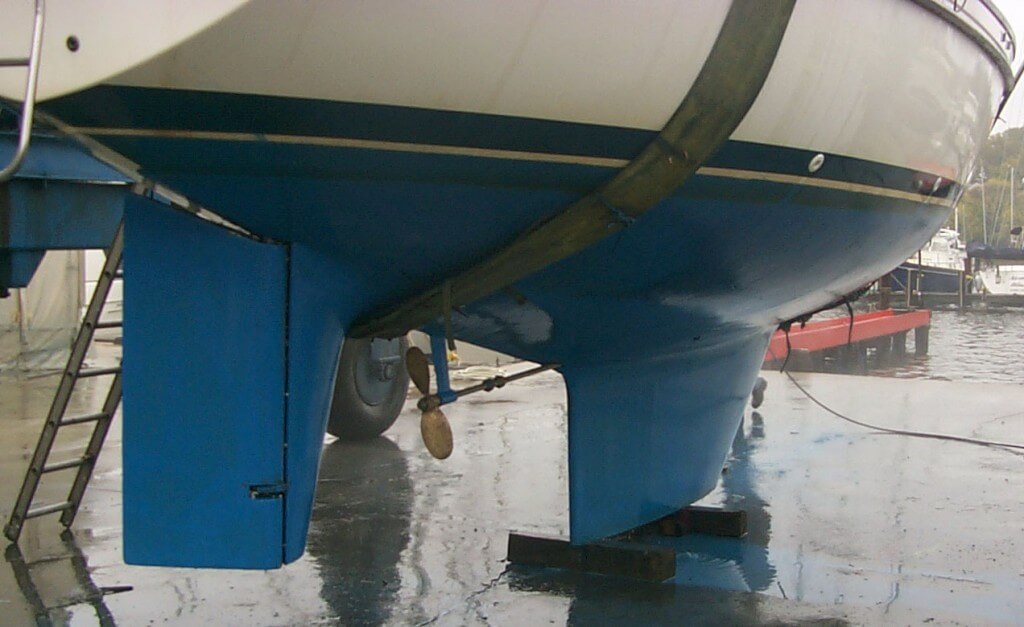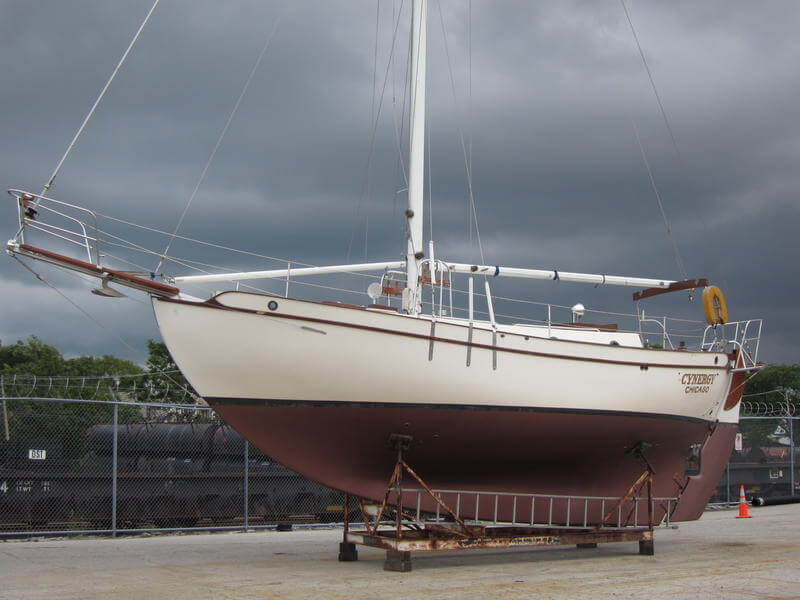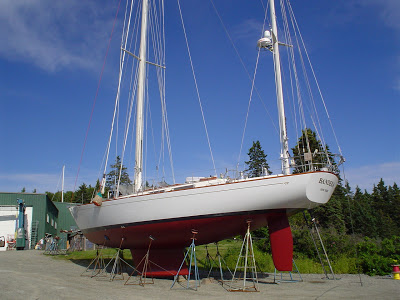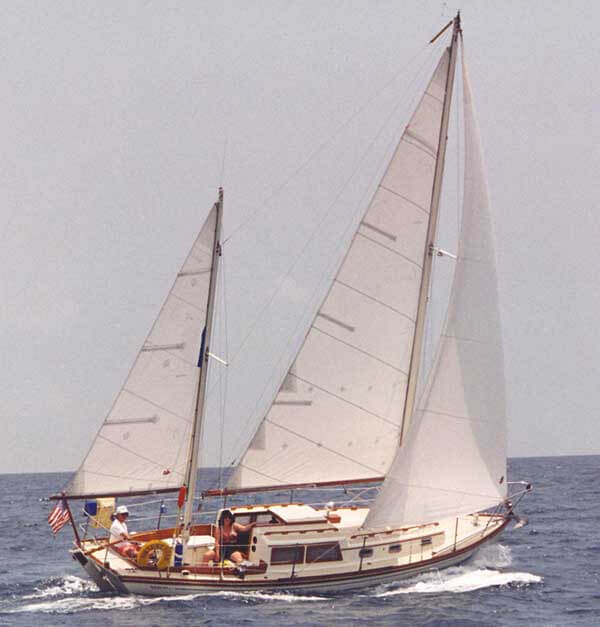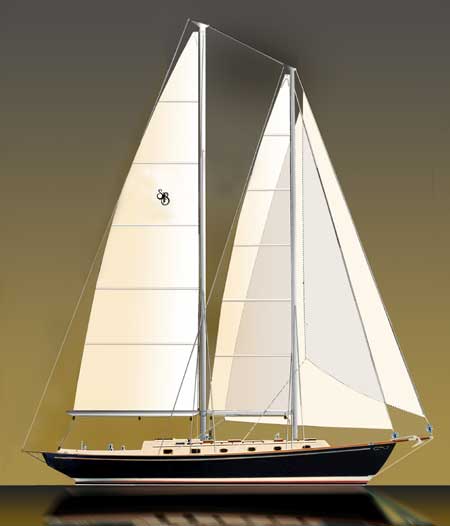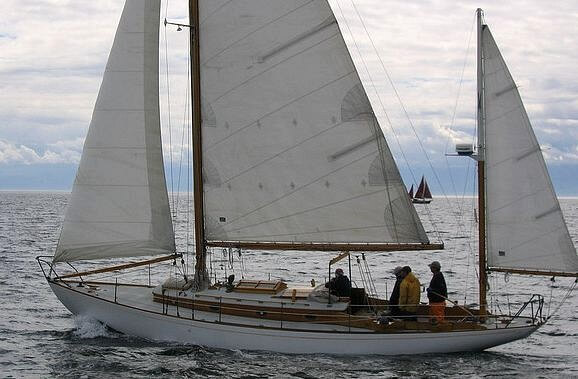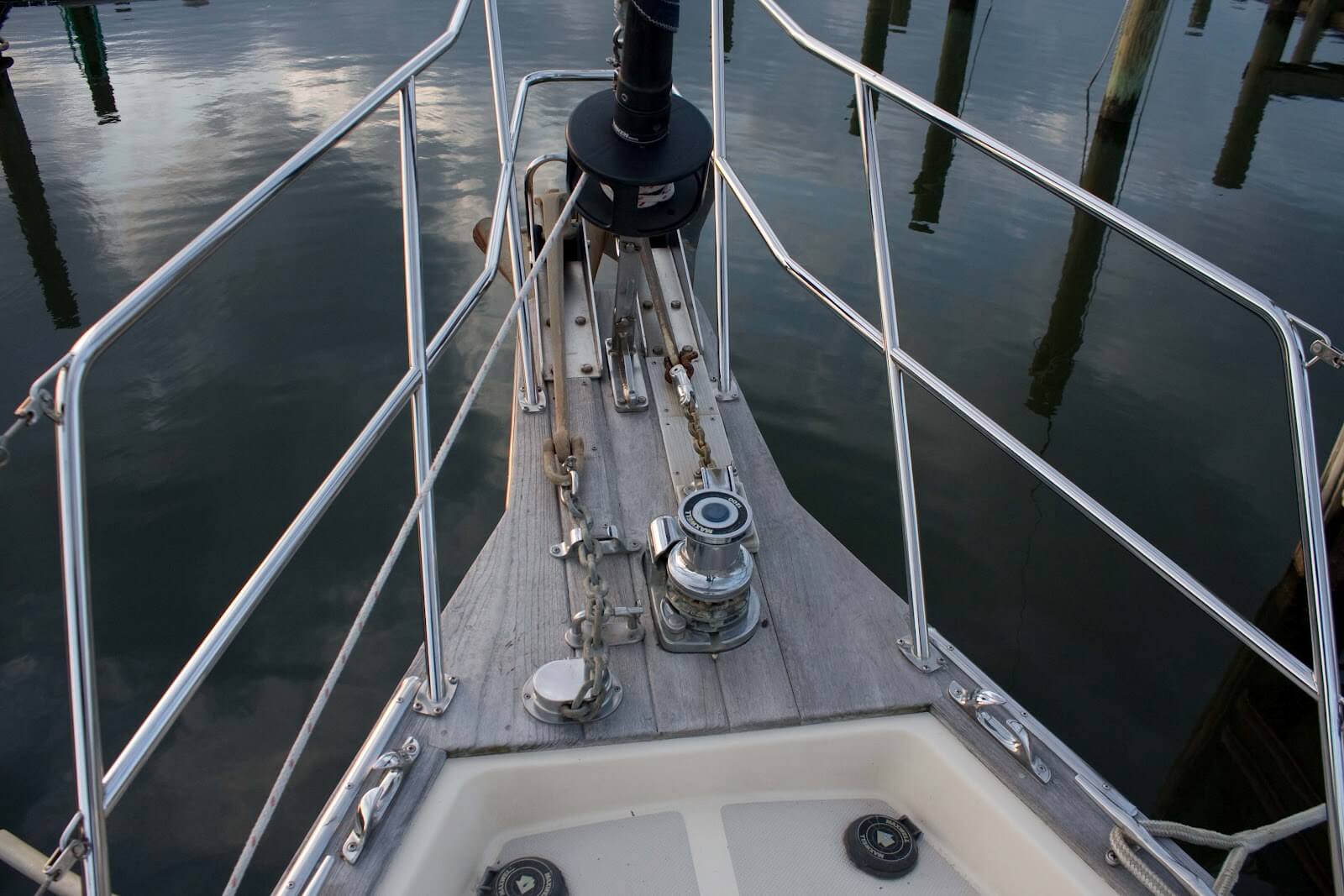Since Margaret has been blogging about what she likes in a yacht, I figured I would make some comments about what I look for in one.
I should preface this by saying that I think Margaret is more interested in looking at boats than I am at this point. We are still a couple years from buying a boat, so perusing Yachtworld often feels to me more like a tease than an educational or inspirational exercise. So, I have yet to develop a deep appreciation for the nuances of different boats, their builders and designers, and their various layouts. For instance, I know I tend to like Bob Perry designs that have the canoe stern, think that Hallberg Rassys are well built, functional, and beautiful, and know – mainly from Margaret – that the interiors of boats tend to feel a lot bigger and more open at about 38 feet. But all these are opinions that are quite uninformed rather than developed through sustained and systematic boat shopping and studying. Consequently, the things that I am going to talk about in this post are fairly basic characteristics that I look for in boats when Margaret shows me a boat or I decide to torment myself a little bit by looking at yachts that are currently for sale.
Perhaps because I have not started looking at boats seriously, I like to think there are a lot of boats that we could be happy with. Moreover, I am not sure that we have the ability to know what would be the perfect boat for us or that there even is some perfect boat for us. instead, I am fairly confident that by keeping our options as open as possible, we will be able to find a great boat – that will become the perfect one as we refit and sail her – for us at a great price when we are finally ready to purchase one.
I should also make clear that I fully support Margaret’s early, systematic information gathering process. She already knows way more about boat interiors and layouts than I do, has a great sense of the market for different designs and years, and is starting to develop a working knowledge of more arcane things like when certain builders were making a given boat and what runs of years are the highest quality. All of the information she is gaining now will be incredibly useful when we start shopping for a boat in earnest.
With all that said, here are three things I currently look for in a cruising boat:
Full keel or skeg-hung rudder
Since we plan to make long offshore passages, a protected rudder seems critical. I know there are both a lot of performance racing boats and quite a few mass production designs from the likes of Hunter, Beneteau, and Catalina that have crossed oceans with a spade rudder, but I am not interested in taking the chance that some half submerged debris will lop off our primary means of steering. While I recognize that a shipping container, whale, or other unidentified underwater hazard might hole our hull, I believe a full keel or skeg-hung rudder provides a certain level of security when you are hundreds, let alone thousands, of miles from land. Inshore, running aground on a full keel or skeg-hung rudder will be less likely to seriously damage our steering (and possibly our hull) than doing so on a spade rudder.
Another consideration is that though most boats with a full keel or skeg-hung rudder are easier to heave-to in heavy weather, something that I also feel is critical to our safety. At the same time, the boats with protected rudders – especially full keel boats – are slower through the water, meaning passages will, on average, take more time. There is a long debate within the cruising community about speed v. heavy weather safety. On one hand, there are those who argue that the ability to get a couple more knots of speed out of your boat can help you avoid the worst of storms at sea, by outrunning a storm or favorably positioning oneself relative to the storm system. On the other hand, the folks I tend to side with argue that even with access to modern weather forecasting and routing at sea one can never be fully confident of avoiding a storm given that the weather is chaotic and dynamic. Thus, it is better to have as many tools at your disposal for dealing with significant weather, including heaving to. Additionally, it is important to have a good design and heavy construction underfoot that the crew can have confidence in when you are caught offshore in serious conditions. While the likelihood of us having to endure a major storm is slim given that we will be traveling during the most favorable times of the year, it is always a possibility. I like the added security of the more robust boat.
Single mast
While I will always prefer the look of a schooner and admit that an appropriately spaced ketch or yawl rig can be aesthetically pleasing, I think a single mast is the way to go for us. Those who support divided rigs say they provide a host of benefits including more easily handled sails, the ability to better balance the helm, and the security of an extra stick should the vessel be dismasted. While I think this can be true in larger boats – especially with a schooner – I believe these are mostly imagined or illusory benefits in the size boat (32-45 feet) we are considering. Instead, what I think a split rig does offer in a smaller boat is more headaches, less effective sail area, and, especially, higher costs. An extra set of sails and rigging is inevitably more hassle, upkeep, and cost. Further, the mizzen is blanketed by the mainsail while beating and does not offer a substantial amount of additional sail area off the wind that cannot be replicated with a genoa or spinnaker. Finally, on most boats the mizzen and mainmasts are connected by the triatic stay. This means that if the mainmast should be taken out in a knockdown, the smaller aft mast will often be going with it. In that case not only will the crew be left without the mizzen, but they will also have an even bigger mess threatening to entangle them and beat a hole in the hull.
Inner forestay
Though I have problems with split rigs, I do like the idea of having more sail options. Thus, I would like our boat to have an inner forestay. This forestay could be permanent or, as I think I prefer, removable (stored along the mast and connected to an eyebolt on the deck when needed). Having an inner forestay would allow us to easily fly two headsails wing-on-wing going downwind in the trades. Even more importantly, an inner forestay would enable us to reduce sail and move the center of effort aft and lower in storm conditions by placing a staysail or small storm jib on the inner forestay and furling the jib on the main forestay. Together with a heavily reefed main or trysail, this sail arrangement can help us make some headway in nasty conditions or help balance the rig when heaving to. As opposed to the rudder and mast configuration that cannot be changed, we could add an inner forestay to most boats we would buy if it does not already have one. So, while I like to see that there is already an inner forestay rigged on a potential boat, it is definitely not a deal breaker when looking.
Other Considerations
While the three features above are most important to me, there are obviously a host of other things I also pay attention to when we are looking at boats. For instance, I always note the age and condition of the engine (and whether it has been rebuilt and by whom), the condition and make of the winches, windlass, and other deck hardware, the general upkeep of the boat on both the topsides and interior, and the gear and electronics that is included (often to get a sense of how the boat has been used – marina queen or bluewater cruising – rather than thinking that any of it will be useable). I also cannot help but note whether the boat has teak decks and a bowsprit. I think teak decks are beautiful, but the potential for water intrusion and a compromised deck make me leery. Moreover, the thought of the ongoing maintenance and heat on my bare feet in the tropics makes me very weary. Regarding a bowsprit, I know they are unnecessary and can add potential problems and costs, but I like the aesthetics of them and always imagine sitting or standing there while underway, watching the water slide against the hull or dolphins cavorting just off the bow; to me, that is the epitome of the cruising life (that and a rum drink in the cockpit at sunset) and I have a hard time loving boats that don’t offer the pleasure.
I am really looking forward to the time when we start shopping for boats in earnest. And, I am sure at that time my list of what I am looking for in a boat will grow significantly. But until then, I enjoy hearing what Margaret has to say about different boat designs and am slowly learning a little bit more everyday.

